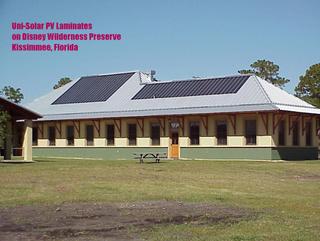Update: Solar Incentives
If you already read my August 3 posting "Silver Lining to a Bad Energy Policy." here is some more amplification provided mostly by the Solar Energy Industries Association (SEIA) in Washington.
Specifically, Congress gave sizable tax breaks to the fossil-fuel fellows in the new energy act, signed by Bush on August 8. There's $1.6 billion in new tax credits for new coal technology; $1 billion for gas distribution lines, another $1 billion for oil and gas exploration costs, $400 million and so forth.

The total cost for solar tax breaks to the U.S. Treasury? It's less than $52 million out of a $14.5 billion energy package. That's beer money by comparison but it does show somewhat better support by Washington for solar power and it may encourage more states to initiate new or increase existing incentives. Click on "Solar Incentives by State" in the Links section of this blog for a list of solar incentives in your state.
The new federal incentives increase tax credits for commercial solar installations from 10% to 30% and offers homeowners a credit for the first time since 1985 which is 30% of equipment cost up to $2000. Both incentives are in effect two years beginning January 1, 2006 through December 31, 2007. The solar tax credit can be used for a photovoltaic (electric) system or solar hot water system. Heating systems must not be used for hot tubs or swimming pools. Finally, this IRS credit applies to the net system cost after any state incentives. Uni-Solar enthusiasts could order their kits now for installation after the first of the year and file for the credit by April 15!
The fe
 deral incentives are actual credits, not deductions. Homeowners who can take the whole $2000 cap will reduce their IRS tax liability by $2000. They could do this for, say, solar-powered electricity in 2006 and solar hot water in 2007 and get as much as $4000 in IRS credits for both years. The 30% tax credit for business has no limit.
deral incentives are actual credits, not deductions. Homeowners who can take the whole $2000 cap will reduce their IRS tax liability by $2000. They could do this for, say, solar-powered electricity in 2006 and solar hot water in 2007 and get as much as $4000 in IRS credits for both years. The 30% tax credit for business has no limit.Some states are already adding or increasing their solar energy incentives. These range from low-interest loans, sales tax exemptions, property tax exemptions, income tax exemptions and cash rebates. In Connecticut, for example, residents can get up to $25,000 back on a 5kW system ($5/watt). New York just past an increase in tax credits for solar effective January 1. The cap for New York's 25% credit will rise to $5000--up from $3750. This tax incentive coupled with various utility rebates means solar system costs are offset by 40% to 70%.
California's solar projects last year accounted for most of the 90 megawatts installed last year. When the state assembly returns Sept. 15, Gov. Schwarzenegger's Million Solar Roofs legislation will be high on the agenda. The goal is to add 3000 megawatts of solar energy by 2018, mostly from continuing a $2.80/watt rebate and possible extension of an existing state tax credit.
Meanwhile, the solar industry is lobbying for an extension of the two-year window of the federal tax credits. "We're not trying to be a subsidized industry forever," says Rhone Resch, president of SEIA, "but without long-term incentives that provide market stability, we won't see manufacturing grow substantially in the U.S."
For critics who say solar "must stand on its own" this writer must remind them of the huge favors the U.S. government has given oil and gas, coal and nuclear energy year after year after year...




0 Comments:
Post a Comment
<< Home